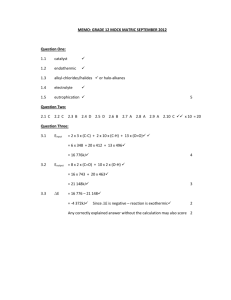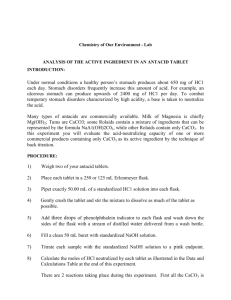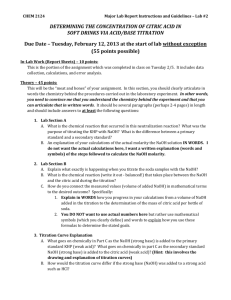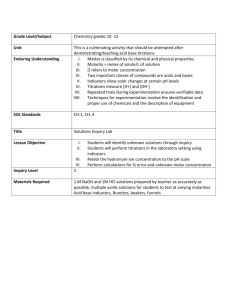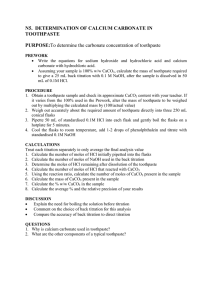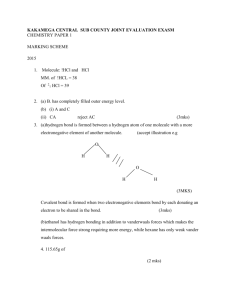Antacid Analysis: Back Titration Lab Experiment
advertisement
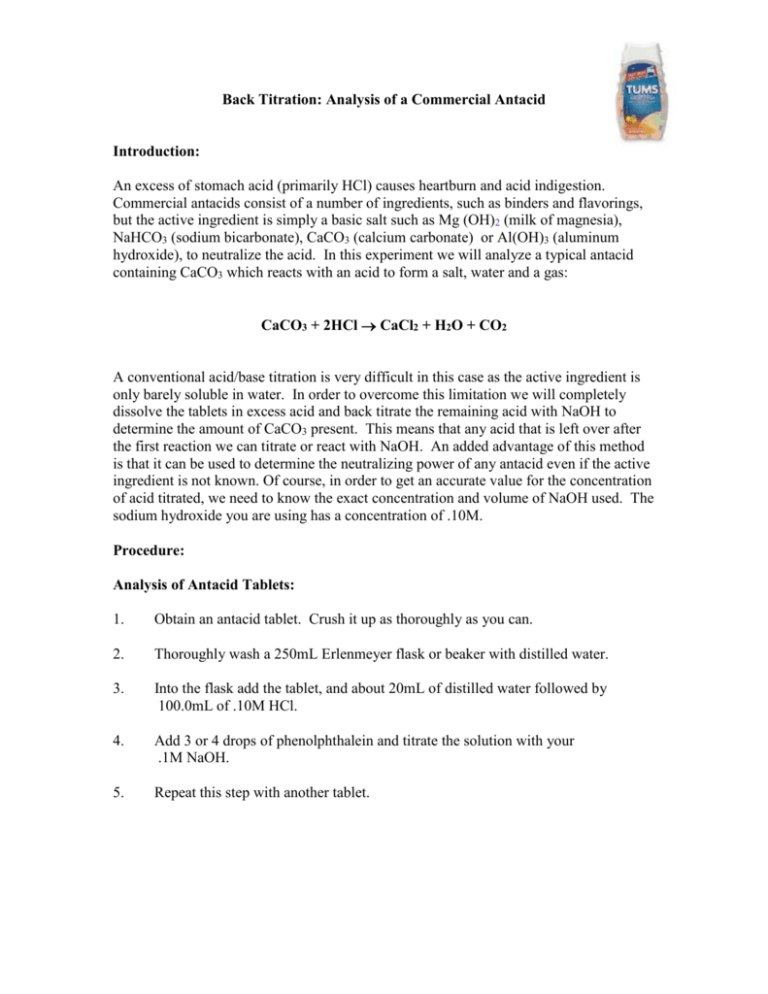
Back Titration: Analysis of a Commercial Antacid Introduction: An excess of stomach acid (primarily HCl) causes heartburn and acid indigestion. Commercial antacids consist of a number of ingredients, such as binders and flavorings, but the active ingredient is simply a basic salt such as Mg (OH)2 (milk of magnesia), NaHCO3 (sodium bicarbonate), CaCO3 (calcium carbonate) or Al(OH)3 (aluminum hydroxide), to neutralize the acid. In this experiment we will analyze a typical antacid containing CaCO3 which reacts with an acid to form a salt, water and a gas: CaCO3 + 2HCl CaCl2 + H2O + CO2 A conventional acid/base titration is very difficult in this case as the active ingredient is only barely soluble in water. In order to overcome this limitation we will completely dissolve the tablets in excess acid and back titrate the remaining acid with NaOH to determine the amount of CaCO3 present. This means that any acid that is left over after the first reaction we can titrate or react with NaOH. An added advantage of this method is that it can be used to determine the neutralizing power of any antacid even if the active ingredient is not known. Of course, in order to get an accurate value for the concentration of acid titrated, we need to know the exact concentration and volume of NaOH used. The sodium hydroxide you are using has a concentration of .10M. Procedure: Analysis of Antacid Tablets: 1. Obtain an antacid tablet. Crush it up as thoroughly as you can. 2. Thoroughly wash a 250mL Erlenmeyer flask or beaker with distilled water. 3. Into the flask add the tablet, and about 20mL of distilled water followed by 100.0mL of .10M HCl. 4. Add 3 or 4 drops of phenolphthalein and titrate the solution with your .1M NaOH. 5. Repeat this step with another tablet. Calculations: 1. Using the volume of NaOH used, and the .10M NaOH concentration, calculate the number of moles of NaOH used for each titration of a tablet. This is equal to the moles of extra HCl that were left over after your beginning reaction. 2. Calculate the total number of moles of HCl you added at the beginning, using the 100.0 mL volume and the .10M HCl concentration. 3. Subtract the moles of extra HCl from the initial number of moles of HCl added to the tablet to give the number of moles of acid neutralized in your titration. 4. Calculate the number of moles of CaCO3 that reacted with your extra acid using your reaction above. 5. Calculate the mass of CaCO3 in each tablet using its molar mass. Repeat for your second trial. Questions: 1. How did your values for the mass of CaCO3 per tablet compare to the value of 200 mg given on the label? 2. What error in the laboratory could have affected your results, where the mass of CaCO3 did not equal 200 mg? 3. Some commercial antacids are colored. How might this be a problem in our analysis? 4. Some antacids contain a different active ingredient. If our antacid contained an Al (OH)3, then what mass of Al(OH)3 would have to be present to neutralize the same amount of HCl as 200 mg of CaCO3? What can you say about the relative neutralizing power of each of these compounds?

